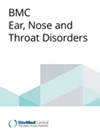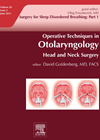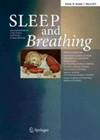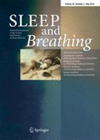
Journal Reviews
Comparison of outcomes after septoplasty
For this prospective study, the authors assessed the quality of life (QoL) with the rhinosinusitis SNOT-20 (Sino-Nasal Outcome Test-20) questionnaire and the symptoms on a visual analogue scale (VAS) in all patients undergoing nasal septal surgery. The patients reported the...
Surgical options for children with OSA
This paper looks at the surgical management of OSA in children and approaches the method of patient selection initially. They discuss the role of polysomnography in that it is part of the AAOHNS criteria in those patients with OSA symptoms...
Outcome of TORS to tongue base and epiglottis in patients with OSA intolerant of conventional treatment
The use of transoral robotic surgery (TORS) in ENT is rather controversial, but the use of robotic surgery for obstructive sleep apneoa (OSA), makes it doubly so. Previous studies on TORS in OSA have been performed with other types of...
Effectiveness of oral pressure therapy in obstructive sleep apnoea: a systematic analysis
Oral pressure therapy (OPT) is a relatively new form of therapy for obstructive sleep apnoea (OSA). Paradoxically it seems to work even though it creates a vacuum in the oral cavity as opposed to the gold standard of continuous positive...









